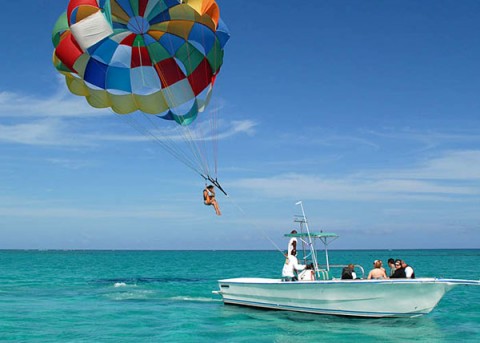 I’ve never done it, but it was on my list. Parasailing; it just looks like fun, doesn’t it? After spending most of my life evaluating what is safe or going after people who weren’t, hanging from a parachute high above the water seemed like a great way to have fun. The view has to be awesome; they make you wear a life jacket so that is covered; and you’re in a parachute for goodness sake. If anything happens, you just float down to the water and wait for them to pick you up, right? Well, maybe…but that depends…on a lot.
I’ve never done it, but it was on my list. Parasailing; it just looks like fun, doesn’t it? After spending most of my life evaluating what is safe or going after people who weren’t, hanging from a parachute high above the water seemed like a great way to have fun. The view has to be awesome; they make you wear a life jacket so that is covered; and you’re in a parachute for goodness sake. If anything happens, you just float down to the water and wait for them to pick you up, right? Well, maybe…but that depends…on a lot.
Since 2006, In the U.S. alone, there have been 8 deaths and 38 injuries associated with para-sailing. Personally, I blame the name; “Parasailing” – it even sounds soft…sailing and parachuting, gliding through the air, adrift. But that is not what is happening.

At the most basic level, parasailing is strapping yourself to a massive object (the chute) that harnesses the power of the wind to pull you in one direction, while an engine with hundreds of horsepower tries to pull you in the opposite direction. Now – being the”Pivot-point-in-a-high-intensity-high-altitude-tug-of-war” doesn’t sound as nice as going parasailing, so they don’t call it that; but that is what it is. There is an engine trying to pull you one way while mother nature fights to pull you the other way while tied together with a relatively thin line.
Most cases of injury or death associated with parasailing occur when the towline breaks. In a Marine Safety Alert released last year, the U.S. Coast Guard stated “Failures occur significantly below the rated towline strengths due to a variety of reasons that may include cyclic loading, long term exposure to environmental elements, the presence of knots, and overloading.” As wind speeds double, the load on the line can quadruple and these lines are exposed to saltwater and sunlight which weaken them a little with every use.
Now I know you think that you will just drift down to the water and wait for that ride, but consider that the big parachute is still attached (to you) and can drag you across the surface of the water and into a pier, or drag you down the beach and into a fixed object, or into one of those nice hotels you were looking at before everything came undone. And just because life jackets are worn, doesn’t mean that drowning is impossible. You may hit the water and be completely wrapped up in shroud lines and canopy.
All these variables can be covered – and some operators try to cover them – but they often are left in the “What are the chances?” box and operators simply hope they don’t happen. They hope the line doesn’t break and they hope that if it does, the canopy doesn’t collapse on top of you or drag you towards the beach.
The parachutes likely aren’t being cleaned and dried out of the sunlight (that weakens them); the harnesses and chairs that they strap passengers in (400-800 feet above the water in some cases) aren’t being routinely load tested and certified; the lines are weakened with every use and there is no way to know how often (or not) they are being replaced; and the industry itself has been unable to agree on standards for operating though they have tried.
I believe that parasailing can be safe – and I believe that most of the time, it is. But real safety comes with standards and regulatory inspections. Why do I think that? Because that is how we got safe everywhere else. Until that happens, I’m leaving this one boating activity off my list.
Author’s Note: Of course – there have been millions of parasailing rides with a fraction of them resulting in injury or death. I’m just waiting for a reasonably enforceable standard and inspection (Think that certificate in the elevator) that lets me know that someone – besides the guy selling me the ride – is looking out for the things I can’t. (tow lines, hydraulics, harnesses) And also that the operator has been trained to handle emergencies and conditions relating to the activity (like dive masters.)


